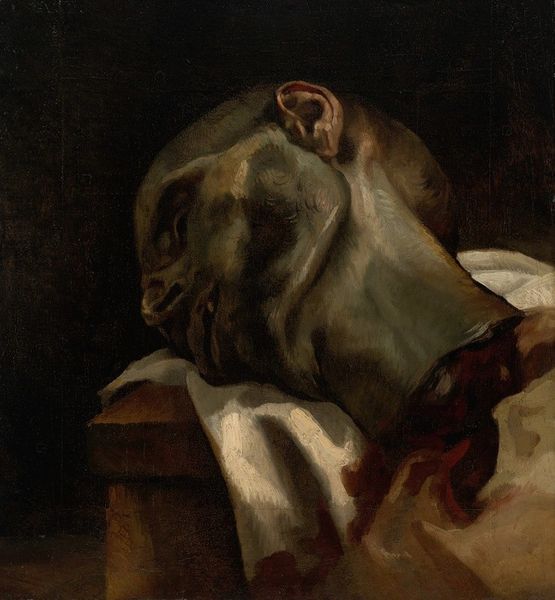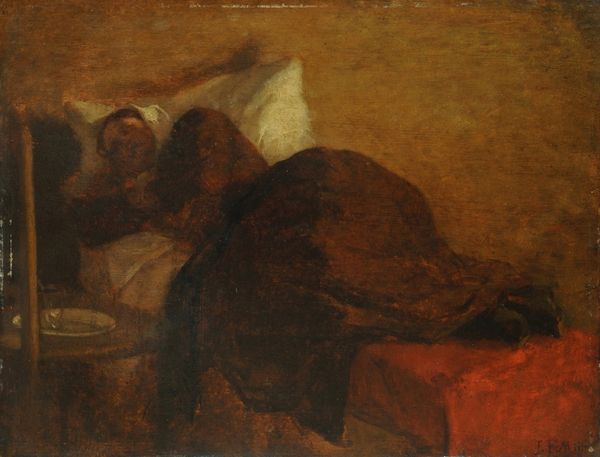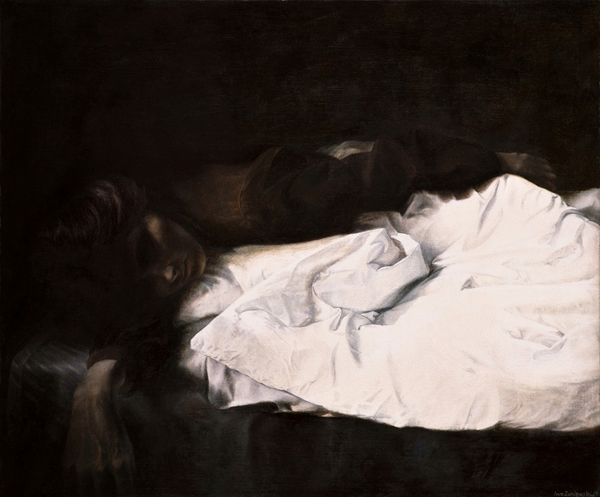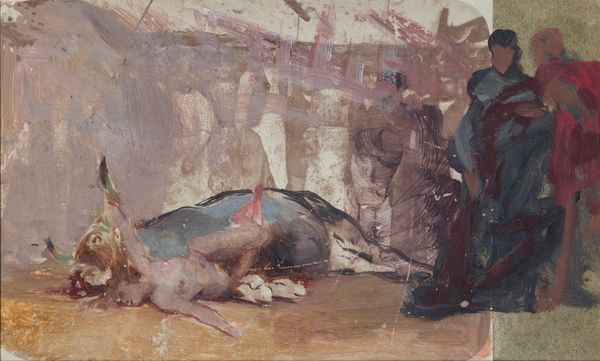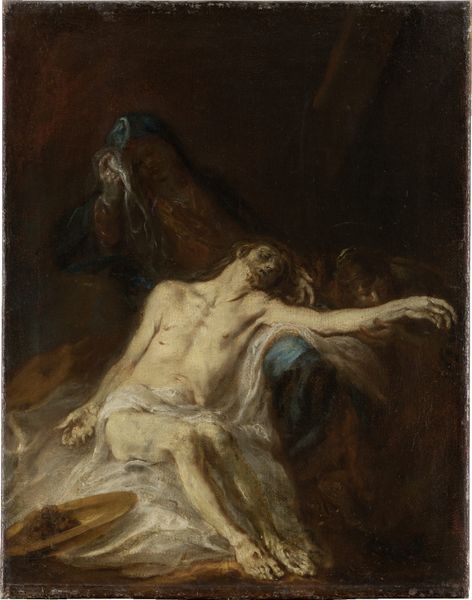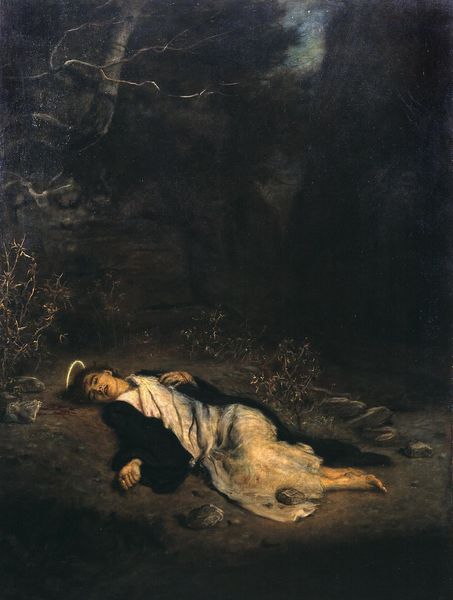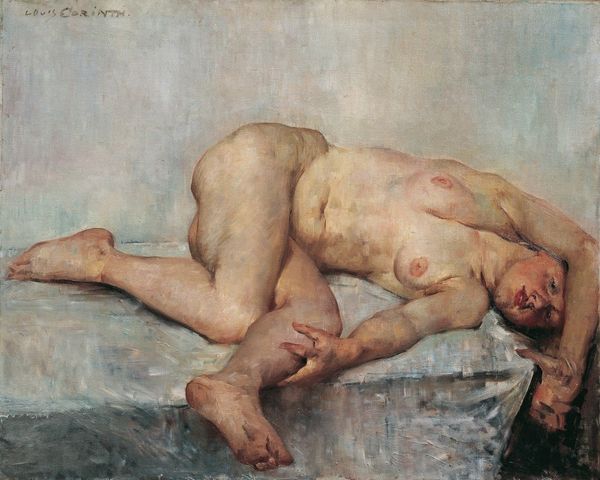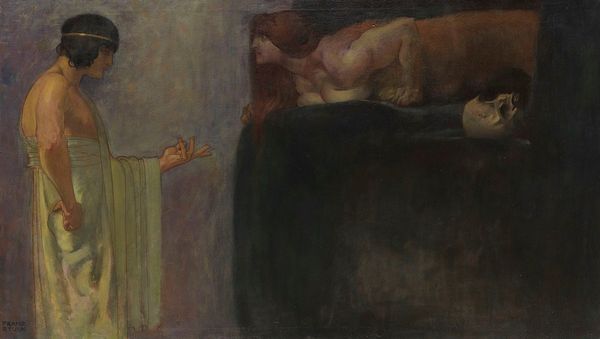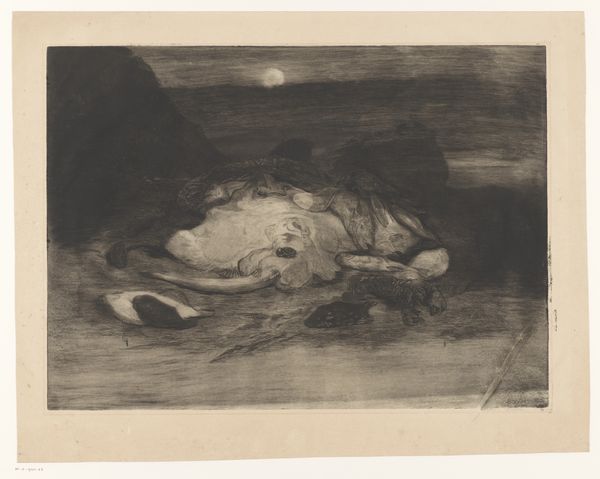
Dimensions: 74.2 x 93.2 cm
Copyright: Public Domain
Editor: We’re looking at Théodule Ribot's *The Empty Bottle*, an oil on canvas thought to be from somewhere around 1876 to 1881. It's...striking, to say the least. The dramatic lighting definitely gives it a sense of unease and even despair. What do you see as most significant in the composition? Curator: The dramatic *chiaroscuro* is undeniably a foundational element. Observe how the artist manipulates light and shadow. This is not merely representational; it is structural. The stark contrast defines form, directs the eye, and creates a profound sense of spatial depth, wouldn’t you agree? Editor: Yes, the use of light is so prominent! Almost theatrical. Do you think that emphasis detracts from the subject matter, or enhances it? Curator: Consider the materiality of the paint itself. Notice the visible brushstrokes, the texture, the almost sculptural quality Ribot achieves with oil. The paint is not just a medium; it's an active participant in conveying the painting's core concepts. Does the application of the pigment itself suggest an emotional state? Editor: Absolutely! The thickness of the paint around the face and hands seems to emphasize the raw, almost desperate quality of the figure. Is there anything to be read from his embrace of the empty bottle? Curator: Consider the formal arrangement: the diagonal thrust of the body, the counterpoint of light and dark masses. Ribot is inviting us to analyze form. His works engage philosophical reflection upon perception and being. What elements contribute most to the effect on the viewer? Editor: The diagonal is dynamic, but the overall darkness, and the man’s stare... They create an immediate and lingering impact. I appreciate you showing me that the *how* of art, as well as the *what*, makes art matter. Curator: Precisely. The interplay of form and medium is, ultimately, inseparable from content, and determines affect. We can analyze how visual properties construct this emotive effect.
Comments
stadelmuseum about 2 years ago
⋮
Half-naked and unnaturally contorted, the figure of a drunken man lies on the floor. His grotesque face stares at the viewer, his arm wearily clutching the empty bottle of wine. The dramatic dark-light contrast testifies to Ribot’s stylistic leaning towards examples of Baroque painting, whereas the noticeably crude application of paint is radically modern. Almost abstract is the markedly flat brushstroke that glaringly stands out from the upper middle of the picture space. With such daring compositions, Ribot became, along with his contemporary Gustave Courbet, an important exponent of French Realism.
Join the conversation
Join millions of artists and users on Artera today and experience the ultimate creative platform.
